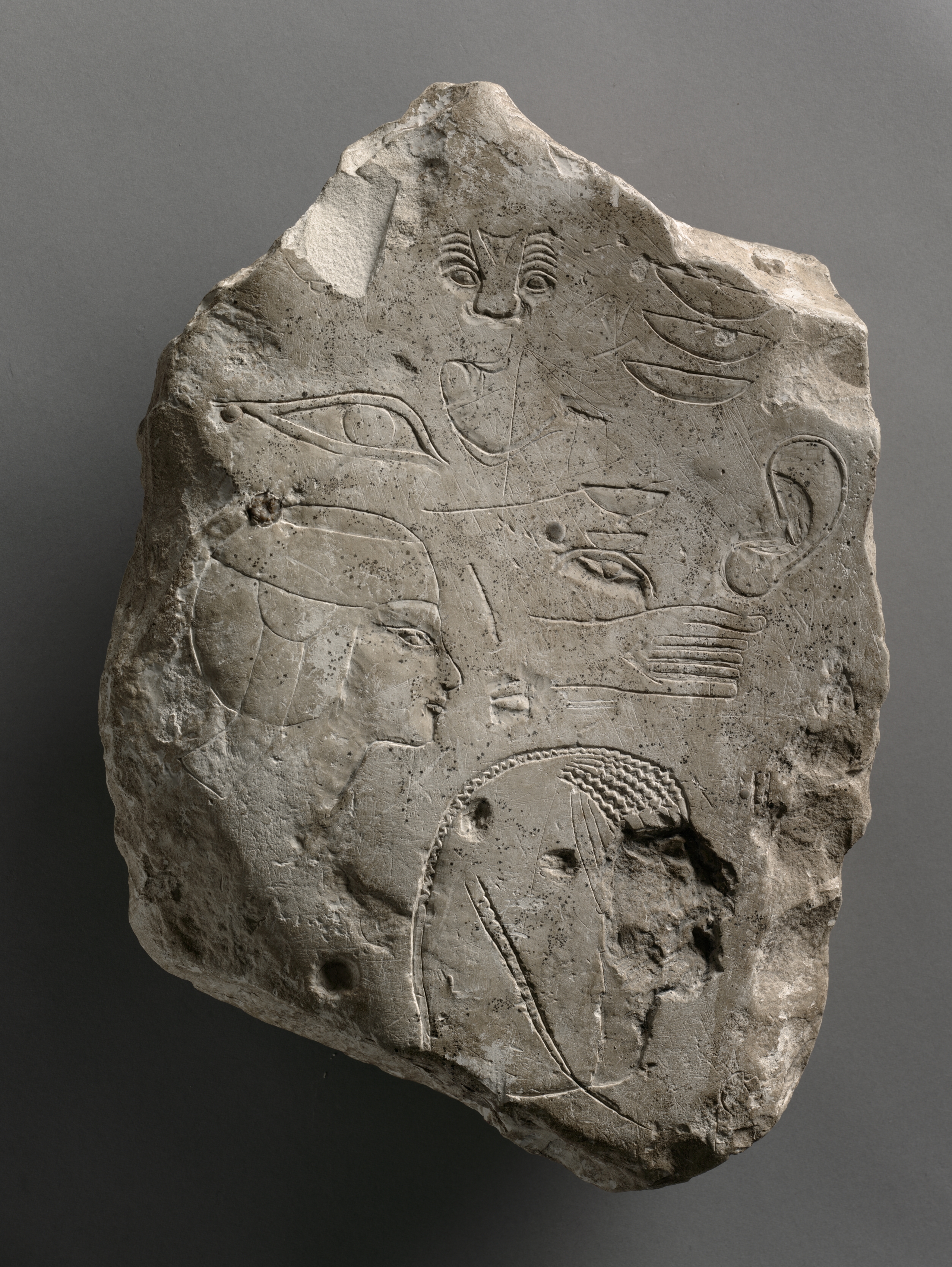The Cleveland Museum of Art
Collection Online as of April 19, 2024

Trial Piece Worked on Both Sides
c. 1391–1353 BCE
(1540–1069 BCE), Dynasty 18, reign of Amenhotep III (1390–1352 BCE)
Overall: 34.4 x 24 x 7 cm (13 9/16 x 9 7/16 x 2 3/4 in.)
Location: 107 Egyptian
Did You Know?
Trial pieces were a necessity of this busy building period because new styles were continually introduced and rapid training of apprentices was needed.Description
This carved flake of limestone provides a fascinating glimpse of the ancient artist at work. The rather routine, basic subjects of this side show a far lower level of accomplishment than the other. The sole details of any skill are the incomplete head of the god Bes at the bottom center and the human ear at the left edge. The simple neb-signs (baskets) are poorly executed, and the drawing of the hand is embarrassingly bad. At the lower right is a thickly banded human eye. Above that is the fair head of a princess wearing a short wig, wide headband, and thick sidelock. At the upper left are the beginnings (or the remains) of the bewigged head of a courtier, the face mostly obliterated.- Probably Thebes. Purchased from Jusef Hasan, Luxor, through Howard Carter
- Exhibition of the Month: Egypt. The Cleveland Museum of Art, Cleveland, OH (organizer) (October 3-December 28, 1952).
- {{cite web|title=Trial Piece Worked on Both Sides|url=false|author=|year=c. 1391–1353 BCE|access-date=19 April 2024|publisher=Cleveland Museum of Art}}
Source URL:
https://www.clevelandart.org/art/1920.1975.b